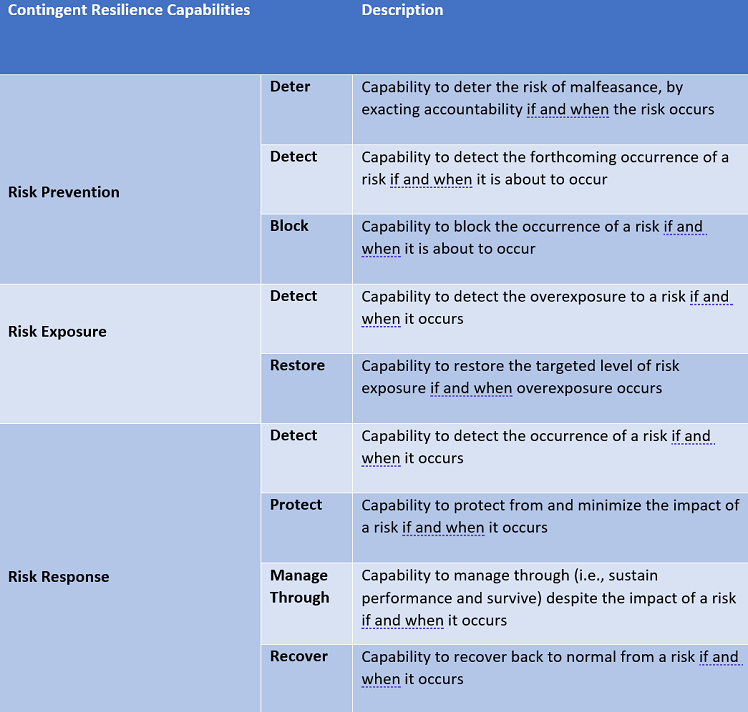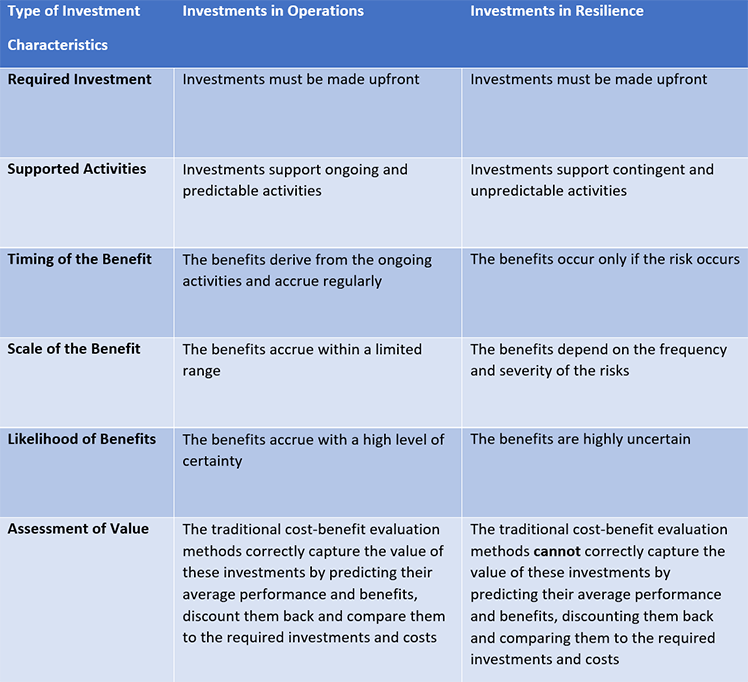Articles
Building Actionable Resilience: The Real Options Approach
- By Vladimir Antikarov
- Published: 6/30/2020

When hit by a particular risk, all organizations mobilize their internal resources to absorb its negative impact, sustain their performance, and strive to recover. In this sense, all organizations are resilient. Unfortunately, this innate resilience is often insufficient to carry the organization through the risk impact and back to normal performance.
For these reasons, most organizations have built-in some form of “actionable resilience” by pre-planning responses and pre-positioning resilience capabilities that can be used under different risk scenarios to minimize their negative impact and facilitate recovery.
CONTINGENT RESILIENCE CAPABILITIES
Because risks are unpredictable by nature, we manage them through a set of contingent capabilities used if and when they occur:
- When the probability of a risk’s occurrence can be impacted, we try to reduce this probability through risk prevention capabilities.
- When the exposure to a risk can be chosen, we can manage it through risk exposure capabilities.
- When the probability of a risk’s occurrence and our exposure to the risk are significant, we create risk response capabilities to be used if the risk occurs.

Because of the contingent nature of resilience capabilities, investments in resilience have quite different characteristics from investments in ongoing operations and cannot be correctly assessed with traditional valuation methodologies.

REAL OPTIONS ANALYSIS
Real Options Analysis[1] applies financial options theory to the valuation and management of non-financial investments/projects. Real Options Analysis is a relatively new, but well-established, field of modern management and finance theory and practice.
Financial options represent the “right but not the obligation” to buy or sell certain financial assets at certain prices. A “real option” is a capability that can be used to respond if the threat of risk or the risk itself occurs, and minimize its impact. Creating the option to respond requires an upfront investment, and the response if the risk occurs requires additional cost. Below we list a few familiar resilience capabilities and describe them as options:
- Building up additional sources of spare parts and materials gives us the option to sustain operations during a failure of the traditional supply chain.
- Maintaining spare capacity gives us the option to use that capacity in case of production failure.
- Cross-training employees gives us the option for quick and effective substitution in case of a particular labor shortage.
- Switching between gas and electricity in hybrid cars gives us the option of flexibility in fuel use.
- Securing revolver-type financing gives us the option to access additional funding in times of liquidity crunch.
- Introducing subscription-type pricing with customers gives us the option to maintain revenues in a situation of usage decline.
As can be seen, all these resilience capabilities have option-like characteristics and so the correct cost-benefit analysis for their selection, optimization and implementation should be done with Real Options Analysis valuation methodology.
KEY BENEFITS OF REAL OPTIONS ANALYSIS
As actionable resilience grows in importance, organizations will face a distinct set of cost-benefit challenges to determine the value-accretive amount of spending on the management of specific risks and the risk portfolio as a whole.
Traditional valuation methodologies, even when they explicitly account for risk, often provide a dramatically inaccurate assessment of the value a particular resilience capability would create for the organization.
Real Options Analysis uses advancements in modern finance to more accurately value the expected benefits from investments in resilience capabilities.
Valuation of resilience projects with Real Options Analysis helps organizations not only to justify and secure sufficient funding, but also to optimize and prioritize the projects to be implemented.
Vladimir Antikarov, MBA, ABD, is Principal with Verea Group LLC. Join him on July 22, 2020 for the webinar, Building Actionable Resilience: The Real Options Approach.
[1] Real options: A practitioner's guide, revised edition T. Copeland, V. Antikarov - Texere, ISBN-10, 2003
Copyright © 2024 Association for Financial Professionals, Inc.
All rights reserved.

